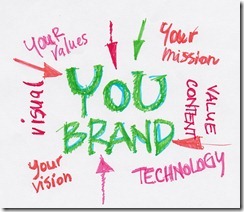As a brand architect and occasional ‘brand evangelist’ I am often surprised by the fast adoption of brands by Middle Eastern consumers. We love brands here and are keen to adopt them and make our mark with them because they are powerful ‘quick signifiers’ of social status. 
Liam Farrell is founding partner and executive creative director of Unisono
So how does brand hungry consumer smartphone adoption correlate with telecom brand building know-how? Simply put: Not so much. Telcos in the Middle East are so busy competing with each other’s “neutralising offers” and other commercial chest beating, which they rarely commit to or invest in building their only really ownable asset – their brand. In the intangible world of telecom the brand is the only differentiator – at a consumer level it’s the loyalty generator, at the level of corporate partnerships it’s a door opener and dealmaker. It creates desire and builds belief. A telco with no brand is just the commodity broker of invisible connectivity that relies on the brand strength of innovative devices to drive sales. Not a great foundation on which to build sustainable value. The lack of physicality in the telco’s offers is a real issue – but it can be overcome by developing true brand presence and a compelling brand narrative.
It’s an issue of poor brand texture
A brand’s texture is expressed in the physical and emotional properties you are able to experience. The physical aspects include everything from the quality of construction and materials to the smoothness of the paper. Emotional properties cover experiential qualities such as how the lighting or service makes you feel, when you are in a store. If your brand has a high degree of interaction with a consumer it has a high texture quotient – BMW has a high quotient where as Yahoo has almost zero. Just because you have a low texture quotient, does not mean you can’t deliver a great brand experience. But you do have to think about it, invest in it that goes against the trend to outsource, and become as virtual as possible, all in the name of cost reduction. But when you are already defined by your intangibility, all these strategies only serve to dehumanise and so commoditise your brand further.
In the race towards lower costs, brands risk turning their offerings into inhuman commodities – a Coke in a paper cup is not so different to a Pepsi in the same cup. The Coke bottle on the other hand has a pleasurable textural quality to it and helps set the experience apart. Humans like texture – we like to touch, taste, feel and believe; it’s what makes us human. That’s why we respond well to brands that understand who they are and convey their promise through relevant textural experiences. Texture gives us something to hang our life story on – that’s why we consumers seek, buy and display brands that have texture, because they allow us to convey something of our own life narrative. Brands that do that are automatically more valuable because we desire them more.
Many of the regional telecom players seem to have forgotten about winning hearts and minds, thinking they can win through the wallet alone. Bundle after bundle, offer after offer, discount after discount, from free to better than free. But where does that game end? Who wins? In the race to the bottom the operator loses out through ever-lower margins and ultimately the consumer misses out on a great brand experience because even if the operator understands the power and value of creating brand texture, they may no longer have budget to deliver it. In the era of number portability the consumer is tied by little more than cost and contract. If loyalty is just about money then the prize goes to the cheapest operator. And that, as any global brand leader will tell you, is a losing strategy.
Telco’s are low-texture brands by choice not design
The problem telecom service providers suffer is they offer a texture-less brand experience with little or none of the enjoy-ability that forges lasting connections with consumers. Imagine for a minute your relationship with your service provider. When you use their services you pick up your handset and connect with your call or access your data – but you do it via your handset. You are not having an STC, Batelco or Du experience; you are having an Apple, Samsung or HTC experience. If it’s enjoyable it is because it’s working and you rarely if ever consciously appreciate that. Most people only consciously think of their service provider when something goes wrong – when you get a big bill, or the line fails or you get disconnected for non-payment, i.e. negative experiences.
The interesting thing about creating brand loyalty is that one of the best times to build it is when something goes wrong. It seems illogical but it’s true. When something goes wrong the consumer is at their most vulnerable and the service provider that gets it right and invests in fixing the problem surprises and delights the customer and creates a special bond. Yet so many telco brands fail to deliver on the basics of service. They are so focused on cost competition they forget the real focus needs to be on increasing the experiential quality of the few connection points they have. Instead they funnel their callers through inhuman and infuriating IVR systems, force them to negotiate automated payment machines that seem to have a fundamental disagreement with all forms of bank note, and prime their customer service teams to provide as many disservices as possible. And don’t even get me started about the standard online and retail experiences…
Are we service or retail now?
Telco’s in the Middle East have an identity crisis – they don’t know if they are retail or service brands. In the ‘west’, brands such as Orange worked out a long time ago that you create far more loyalty building connections as a retail telco brand than you do as a telco service brand. By offering handsets, accessories and associated products in stimulating lifestyle-enhancing environments the operator creates a connection that is about far more than just bandwidth or reception. The connection is about adding value to the lives of their target audiences and that makes things far more interesting and engaging. And engagement means both revenues and loyalty. An engaged consumer spends more and stays longer.
Regionally most telcos offer a retail store but are not committed to retailing – they are pseudo retailers who either seek to limit their involvement in this ‘tangible retail stuff’. They outsource the connection to a third-party and dabble inconsistently around the edges of the concept seemingly incapable of seeing their brands as a ‘whole’. Instead they limit their perspective and impact to a set of leaflets, posters and phone displays. In the end the Middle Eastern telco retail experience is often little more than a painfully garish and disorienting shop scheme that the customer can visit to complain, pay a bill or try (often in vain) to interact with a device that is tethered a display. The brand experience is at best forgettably dull and more usually pitifully frustrating.
Creating meaningful difference
For a low texture brand like a telco to succeed in the long-term it really needs to build the brand. The invisible connection and the innovations of other brands is not going to give people a reason to want to stay connected with you no matter how many ‘firsts’ you claim to bring to the region. So, if your brand suffers from a serious lack of texture, how do you create a brand that people will fall in love with and have loyalty to? You have to start with a serious review of the market and build a compelling proposition that is uniquely yours. When Viva hit the Bahrain market the competition was fierce and the landscape saturated – yet in a little over three years Viva enjoyed one of the region’s best brand equity results. 
Setting their tone of voice as an aesthetically cool, enhanced reality whose youthful exuberance was personified in the rallying cry to Live Every Moment, Viva captured the sweet spot between Zain’s wild untamed “inzain in the brain” and Batelco’s “red or dead” nationalism. Viva invested in their brand position and promise, yes they supported it with offers and enhanced value, but they also considered the other brand touch-points like simplified product plans, brand activations, enhanced content and stimulating partnerships. And the money followed the brand. The experience was overall refreshing and held promise because the brand was considered an important asset worth building.
What typically happens when your brand succeeds is the visionaries retire from the front line and in comes the sales guy with his tried and tested BOGOF (buy one get on free) offers and a race-to-the-bottom focus on “tactical”! Out goes the engaging advertising, innovative digital work and interesting activations and down comes the brand equity and desire. Before long your difference has evaporated and you are in the commodity business flogging other people’s handsets with the same handset manufactures images and instantly forgettable stock shots of smiling kids in a ‘blandsville’ family scenario. The potential for meaningful brand engagement is lost and its life enhancing potential squandered. The reader may at this point scoff a little, perhaps choking on their latte – ‘Life enhancing?!’ It may sound far-fetched but indulge me.
Telecom operators provide the means for people to connect, to share, to learn, to keep memories, to play, to listen, to talk, in other words to express themselves – all their selves, all the time, everywhere. The humble phone has become ‘my phone, my lifeline, the object I can’t do without’, yet the average telco squanders this precious relationship building potential in a slew of emotionless competition crushing offers and promotions designed to maximise the number of connections, yet in reality lose the point of making the connection in the first place. Surely the point of making the connection in the first place is to build a relationship that will last and stand the test of time – even in the face of relentless BOGOF offers from your competition? So if we want to keep our customers and become their brand of choice, rather than just the offer of the month, what do we need to do?
You need to think strategically about where you are going as a brand. What is the market doing? What are your consumers doing? How are you addressing their needs and desires? What’s your mission and what are you promising the market? How can you create a compelling connection? What is it about you and your brand that is unique, compelling and of value to your consumers? How can you make your telco store experience more than a payment zone or complaints arena? How can you create a compelling retail experiential zone where shoppers want to come and hang out? How can you make your customers want to share you and stay with you and grow with you? In other words we need to get the visionaries back in the driving seat – the brave thinkers and bold doers who want to deliver an extraordinary brand experience because it’s rewarding in more ways than one. Great brands not only command loyalty from their customers, but also from staff, they are fun to work with and be around and because of that they stand the test of time, and command a greater share of the customer wallet.
It is a truism that your brand is your business, so if you’re a company in a fiercely competitive, low texture sector like telecoms, building your brand has to be your top strategic priority, because with so few connections it is even more important to get them right.
Liam Farrell is founding partner and executive creative director of Unisono





0 comments ↓
There are no comments yet...Kick things off by filling out the form below.
Leave a Comment